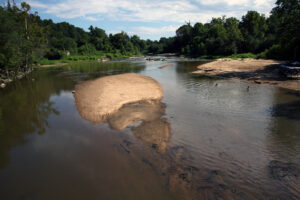News
Open house a forum for Jack’s Creek concerns
Education, Environmental, Events, Flooding, Sound Rivers, Tar-Pamlico Watershed, Water Quality
Posted on May 9th, 2024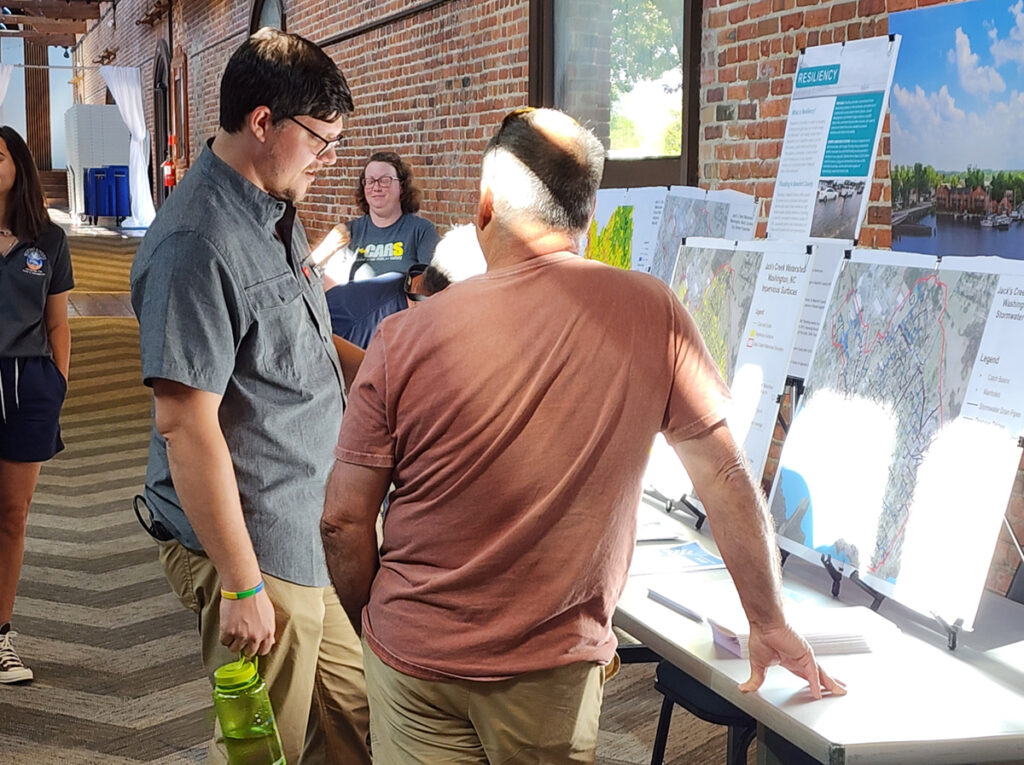
Sound Rivers Program Director Clay Barber talks stormwater with one of the attendees of the Jack's Creek open house.
Jack’s Creek was in the spotlight last week, as dozens of people turned out for its 9-Element Watershed Plan open house at the Washington Civic Center.
Sound Rivers Program Director Clay Barber was host, along with Jamie Heath from the Mid-East Commission and Hope Woolard, Washington Public Works director, as they shared potential plans and projects resulting from two years of Jack’s Creek study.
“The groups that showed up were split pretty evenly between folks that are pretty aware of water quality and stormwater issues and were there to show support that we’re doing what we’re doing,” Clay said. “Others were surprised about flooding and were interested in how to mitigate it and how things have changed over the years. Some people shared that recent storms have flooded their houses for the first time in decades, and there were lots of questions about their properties as categorized on the maps.”
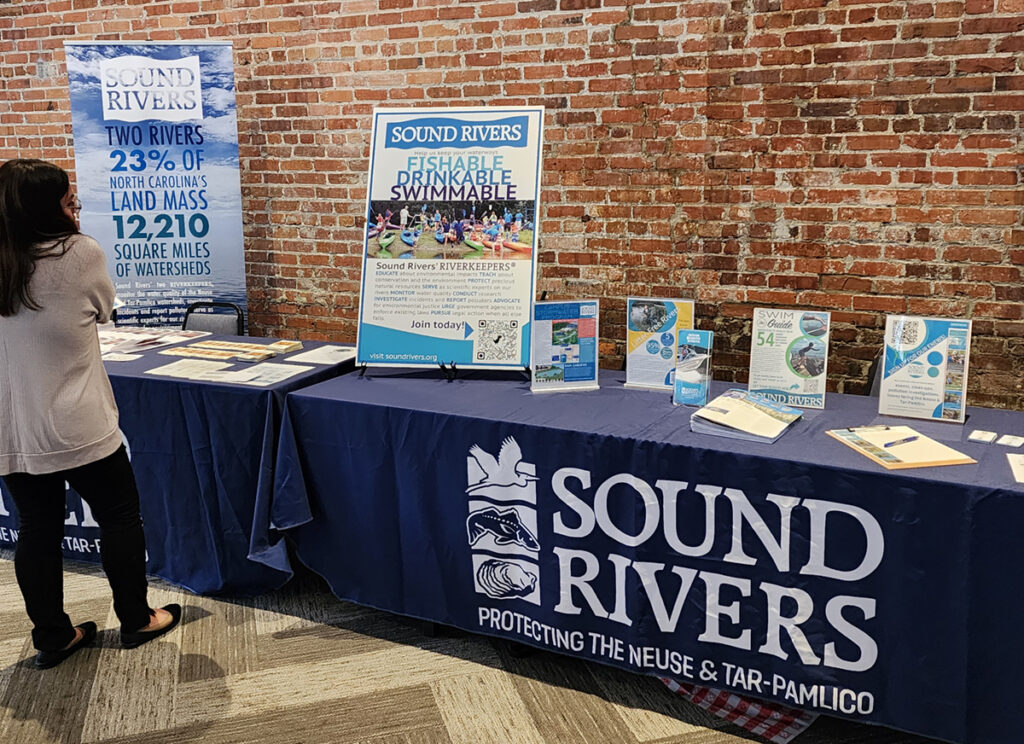
Maintenance of stormwater infrastructure was also a concern for many of those in attendance.
“Maintenance came up a lot. I think folks feel like drainage systems aren’t ‘cleaned out’ enough, which is common, though not the whole solution,” Clay said. “But it sparked some good conversation about basic, foundational things that the watershed community can do to move the post collectively.”
Jack’s Creek watershed drains a large area of the City of Washington, from just north of 15th Street to the Tar-Pamlico River to the south, and some areas west of U.S. 17 Business to east of Jack’s Creek. The 9-Element Watershed plan for Jack’s Creek identifies stormwater projects that could be implemented within the watershed to not only mitigate flooding but improve the water quality of the creek. The proposed projects are wide-ranging: removal of pavement where it no longer serves a purpose (for example, large, unused parking lots returned to grassy areas or rain gardens); intentional use of plants known to take in lots of nutrients in the perimeter around the city dog park; rainwater harvesting cisterns collecting runoff from rooftops.
“We’re very much in the final stretches where we take all this data around water quality and flooding and impervious surfaces and pollution sources and hold that up in comparison to the projects that our partners at N.C. State have suggested and which situations they best apply to,” Clay said, adding that next steps include determining exact locations for projects on city-owned property. “In the end, the city will have a very nice, highly esteemed plan that state and federal grant programs require, or like to see, with shovel-ready projects, which improves everyone’s chances of getting funding for these projects. Hopefully, this plan will also help guide future development. Anytime they’re going to redo a road or construct something in the Jack’s Creek watershed, it will be a reference for planning, and show how development here, or there, could impact water quality and flooding.”
Want to have Sound Rivers’ latest news delivered straight to you inbox? Sign up for our weekly eNews today!
Related News
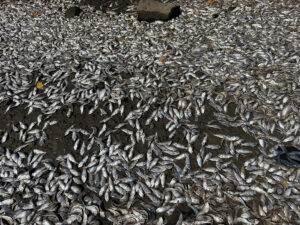
Neuse fish kill expected to extend beyond holiday weekend
July 3rd 2025
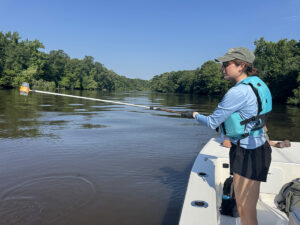
Swim Guide fails prompt Maple Cypress investigation
July 3rd 2025

Riverkeeper, town partners root out source of Smithfield sediment pollution
July 3rd 2025
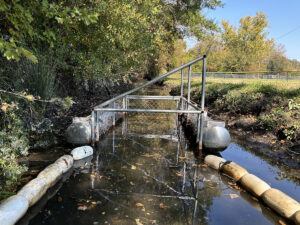
Trash trap No. 12 approved for Smithfield
July 3rd 2025
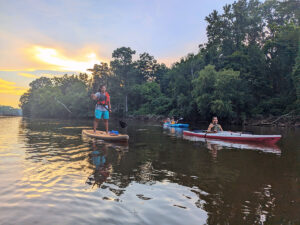
Sunset River Paddle fundraiser boosts Water Quality Fund
July 3rd 2025

Riverkeepers host quarterly Water Watch meeting
July 3rd 2025
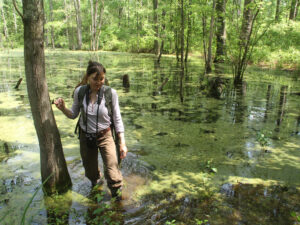
Public hearing will determine the fate of many NC wetlands
June 26th 2025
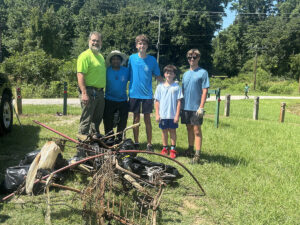
Clayton gets first official trash-trap cleanout
June 25th 2025
